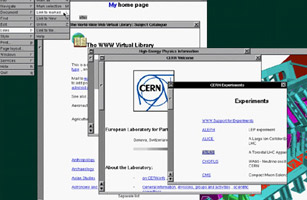
Aug. 6, 1991
Nobody was paying attention to Tim Berners-Lee and his pet idea. He was a young British scientist at CERN, a high-energy physics lab in Geneva, and he had a radical new way for scientists to share data by linking documents to one another over the Internet. He had kicked around a few different names for it, including the "Infomesh" and the "Information Mine." But he wasn't getting much interest from his bosses. His proposal came back with the words "vague but exciting" written across the cover.
So Berners-Lee took his invention to the people. He posted a message to a newsgroup — a kind of electronic public-access bulletin board — announcing the existence of the "WorldWideWeb (WWW) project." The message included instructions on how to download the very first Web browser from the very first website, https://info.cern.ch. Berners-Lee's computer faithfully logged the exact second the site was launched: 2:56:20 p.m., Aug. 6, 1991.
He posted it, and we came. From that day forward traffic to info.cern.ch rose exponentially, from 10 hits a day to 100 to 1,000 and beyond. Berners-Lee had no idea that he had fired the first shot in a revolution that would bring us home pages, search engines, Beanie Baby auctions and the dotcom bust, but he knew that something special had happened. "Of all the browsers people wrote," Berners-Lee remembers, "and all the servers they put up, very few of them were done because a manager asked for them. They were done because somebody read one of these newsgroup messages and got that twinkle in their eye."